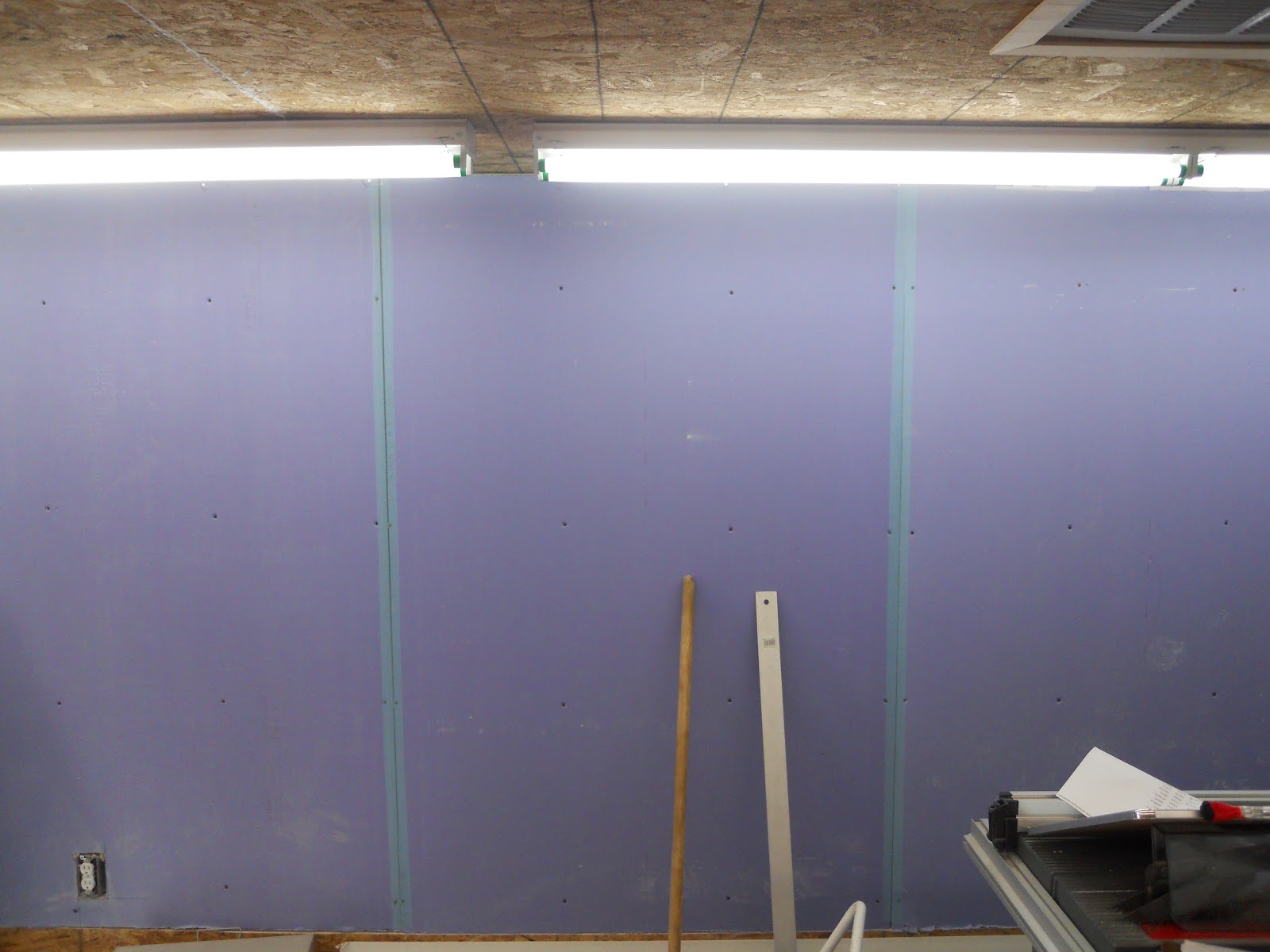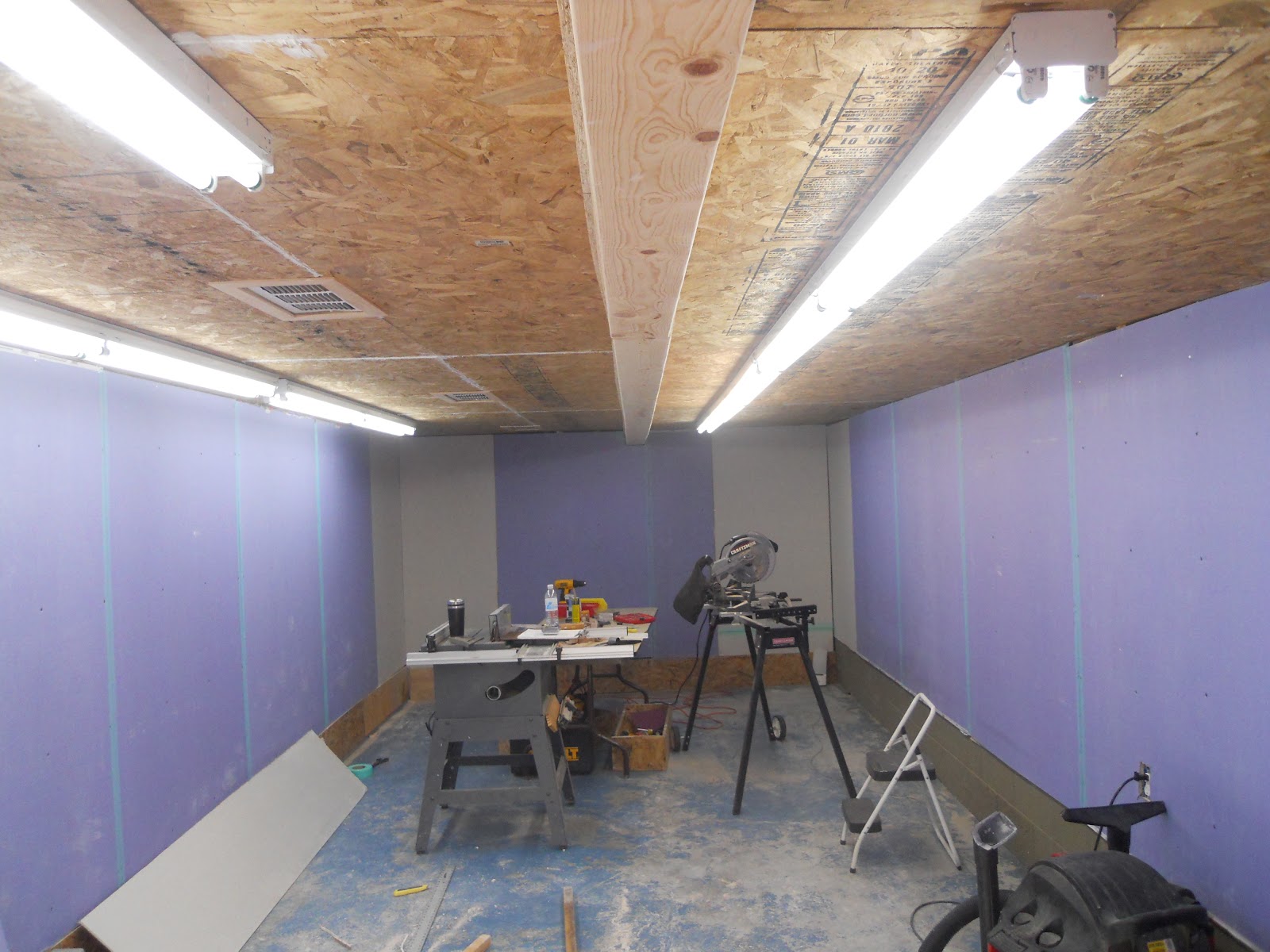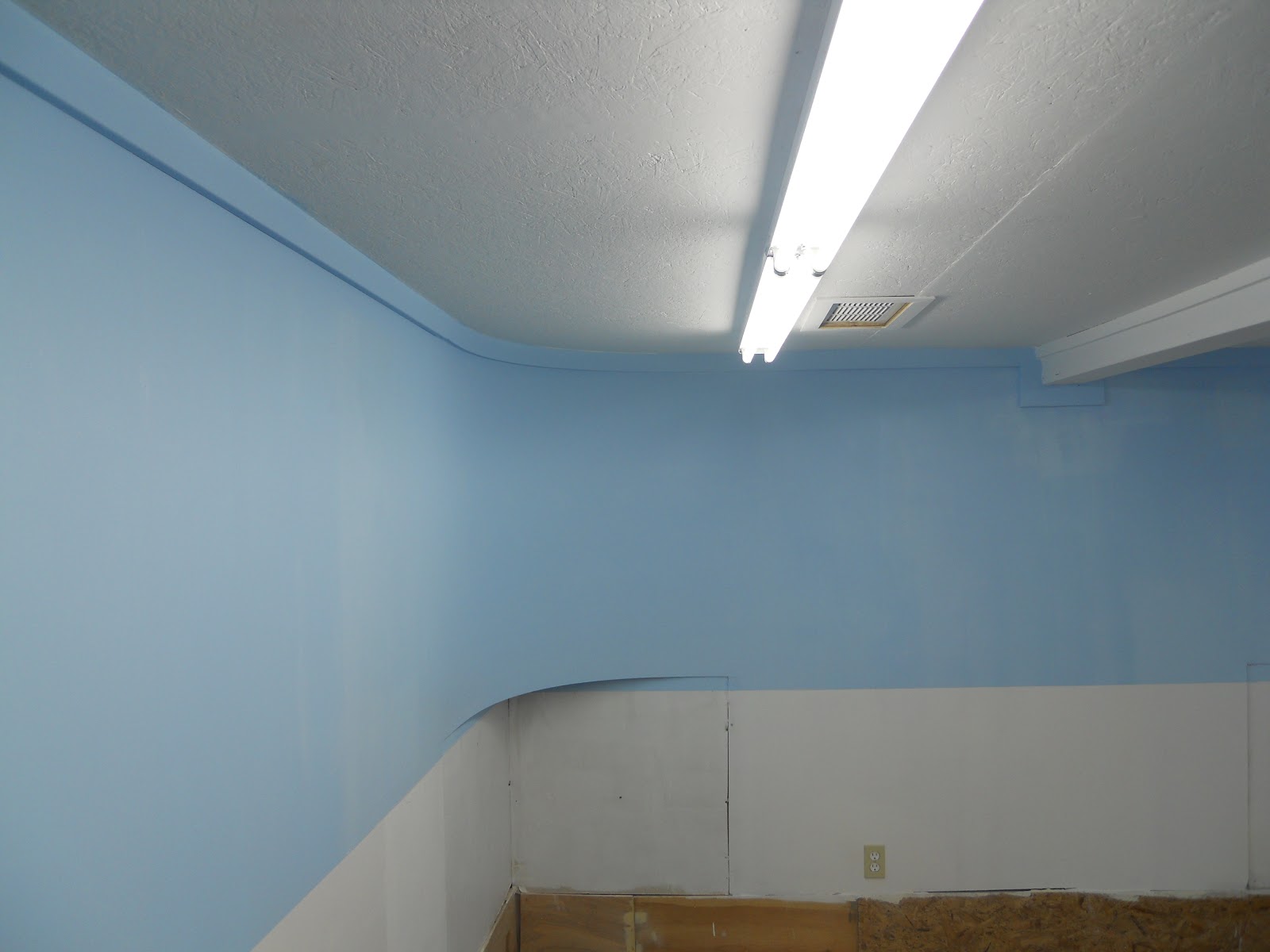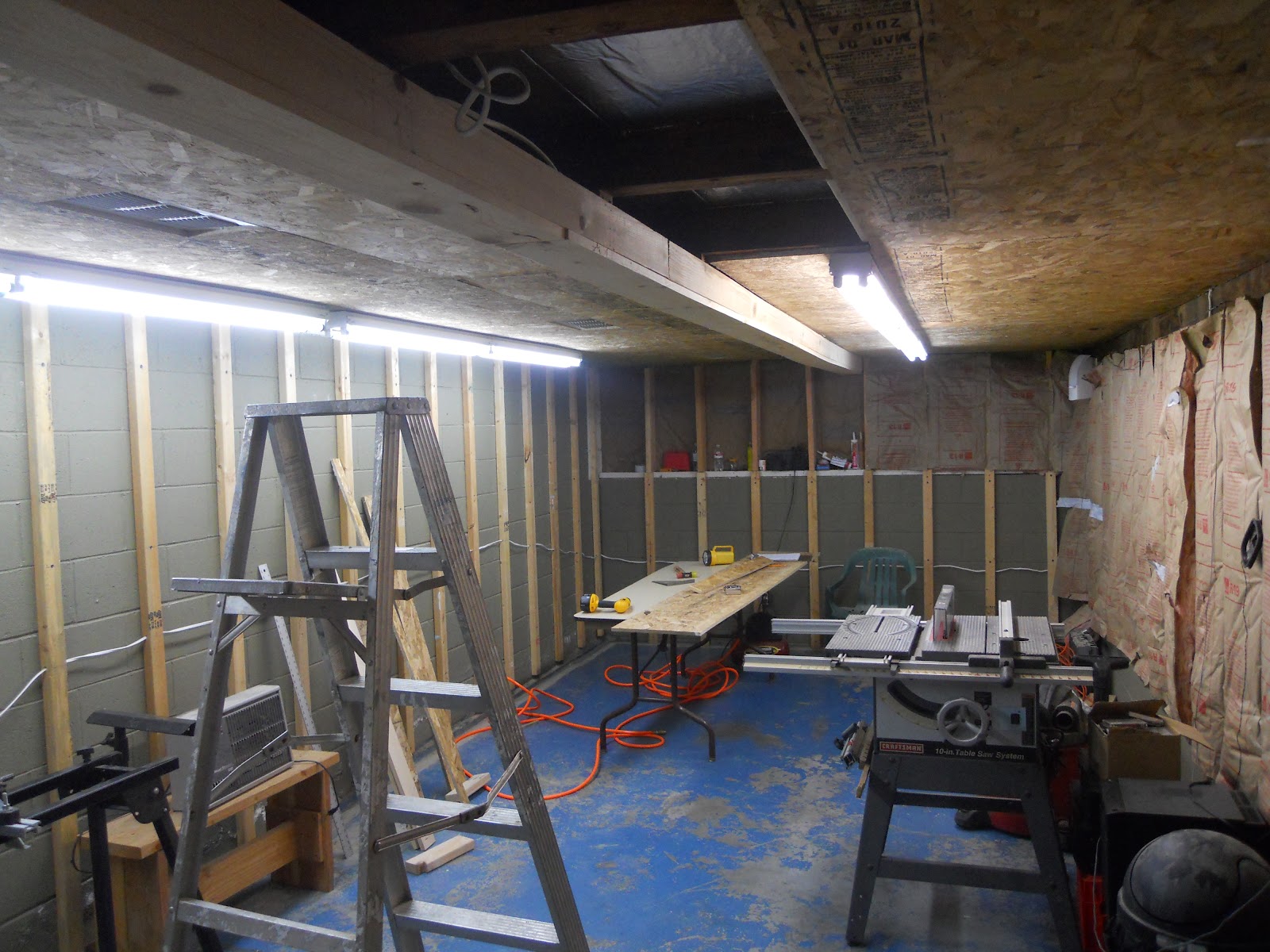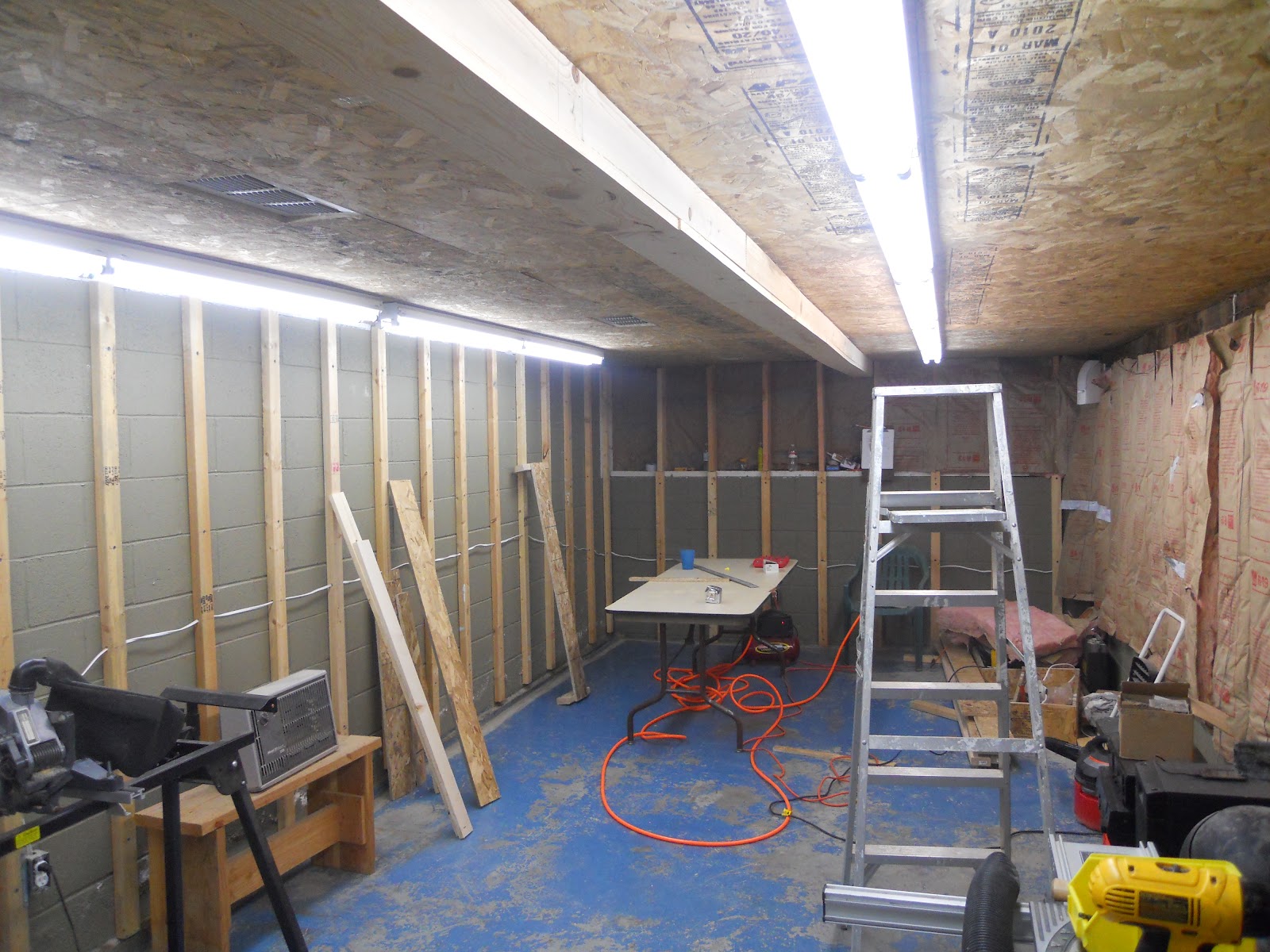I'll talk about staging later, as well as each and every modeled element as I get further into this, but now a few words about general construction. As can be seen by this photo below I used 3/4" 8 ply furniture grade plywood for all basic benchwork construction. I got this idea from Phil Gulley who built the Sumpter Country Lines using similar construction techniques. It has also been suggested in the model press over the years. Furniture or higher grade ply is very stable building platform for my California environment.
The photo of benchwork construction at Flonellis shows most of the cantilever type benchwork building techniques employed including angle brackets sitting on wall mounted plates, as well as straight joists tied to a 2 piece bracket. The 2 pieces are made up of a triangle bracket, a gusset as it were, tacked to a side of rectangular mounting plate screw mounted through the wall stud. Then my support pieces run against the plate and along the gusset plate for a very strong support. This is another Phil Gulley design. I borrowed his template for making this 2 piece bracket and made them for the entire layout in less then a days work. If your going to use your wall studs as the backing for those mounting plates please remember to mark the center line of every wall stud somewhere on the wall where it can be seen and appreciated. You'll still need to drill a small exploratory hole in the wall to ensure that your line is accurate, but once that is understood you'll have a strong interface between the stud and your plates. Note that only wall mounted plates and risers for adjusting sub-roadbed height utilize screws. Everything else is glued, then nailed using an 18ga nail gun with appropriate size nails for the job. If I thought there might be adjustment needed to a particular benchwork element I used screws, mostly though its 18ga brads and glue. Lastly remember to drill or predrill your holes for wiring. My wiring was going to be pretty simple. Control wiring, tortoise switch power in Folsom and 115vac lamp wiring for lower level lighting. So 3 holes in each joist was all that was ever required.
Trackage has started to appear; this specifically being the staging lead going up grade to Folsom. We had to do this because that staging lead is under the first deck. There is no second deck as of yet.
Trackage has started to appear; this specifically being the staging lead going up grade to Folsom. We had to do this because that staging lead is under the first deck. There is no second deck as of yet.
| the photo on wall is inspiration I guess - photos of Latrobe and things to come |
Another view a little bit further upgrade from the first photo. My trusty 2' level is on the bench top. A 1/2" dowel slipped under one end of the 2 foot level approximates a 2% grade when the bubble is between the marks. On a calculator take the % of .5 to 24" = 2.08%. I tried to stay on the low end of this, meaning under 2% through out, but I always kept at grade except where spurs, sidings or towns dictated otherwise. I used mostly cookie cutter cutting techniques so that my road bed follows grade, but the surrounding area does not. Its not always this way in the real world so somewhere on the layout the entire benchwork is at grade..more about that later. There is only one leg to support the layout so far. The benchwork is over 30" deep at one spot in Folsom, but generally less then 24" and sometimes as narrow as 10." Found the photo's below this morning. I think they better represent the initial stages of benchwork support around the wall.
More later.
More later.






